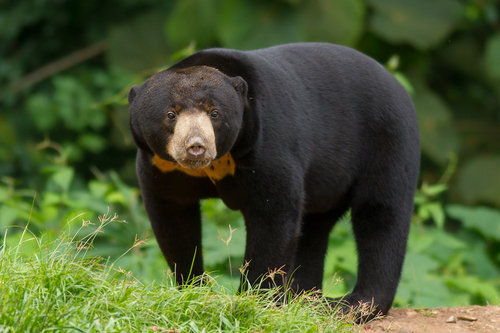
Sun Bear
The Malayan Sun Bear, with its sun-like chest patch, thrives in Southeast Asia's forests. Its impressive climbing skills and lengthy tongue make it a master forager, playing a vital role in seed dispersal and pest control.
15-30 years
Lifespan
30.0 kg
Weight
Height: 1.2 - 1.5 m
Size
Brown, Grey, Yellow, Red, Black, White, Orange
Color
3-4 years
Age of Sexual Maturity
18 months
Age of Weaning
30 mph
Top Speed
Vulnerable
Conservation Status
Decreasing
Population Trend
Characteristics
Helarctos malayanus, known as the Malayan Sun Bear, is the smallest bear species, inhabiting the tropical forests of Southeast Asia. It has a distinctive orange-yellow chest patch resembling a rising sun, long claws for climbing, and a remarkably long tongue for extracting honey and insects.
Distribution Range of the Sun Bear
The Sun Bear (Helarctos malayanus) is native to Southeast Asia, specifically found in the tropical forests of the Malay Peninsula, Sumatra, and Borneo. Its range extends into parts of Indochina, including southern China, Myanmar, Thailand, Laos, Cambodia, and Vietnam.
Sun Bear's Habitat
Environmental Conditions
Sun Bears primarily inhabit tropical lowland forests and are typically found in dense primary and secondary forests. These regions are characterized by a hot and humid climate with significant rainfall throughout the year. The dense canopy of the forest provides a cool and shaded environment, essential for the Sun Bear's survival.
Ecological Niche
Sun Bears are primarily arboreal, spending much of their time in trees. They play a crucial role in their ecosystem by aiding in seed dispersal and controlling insect populations. Their diet is omnivorous, consisting mainly of fruits, honey, small vertebrates, insects, and occasionally small mammals. Their long tongues are adapted for extracting honey and insects from crevices. Sun Bears also help in maintaining ecological balance by scavenging and controlling termite populations.
Copyright @ Nature Style Limited. All Rights Reserved.
 English
English